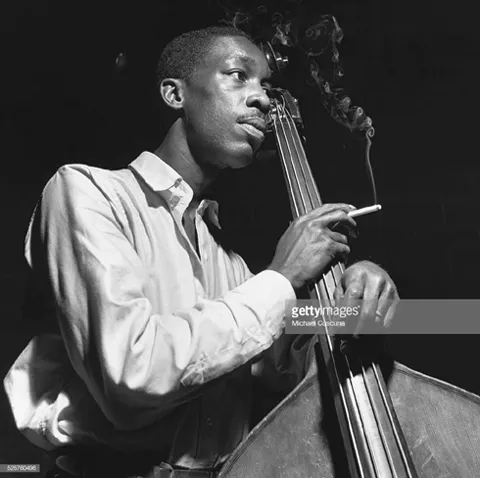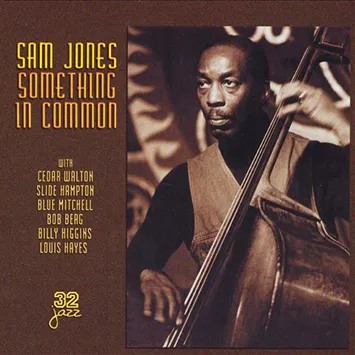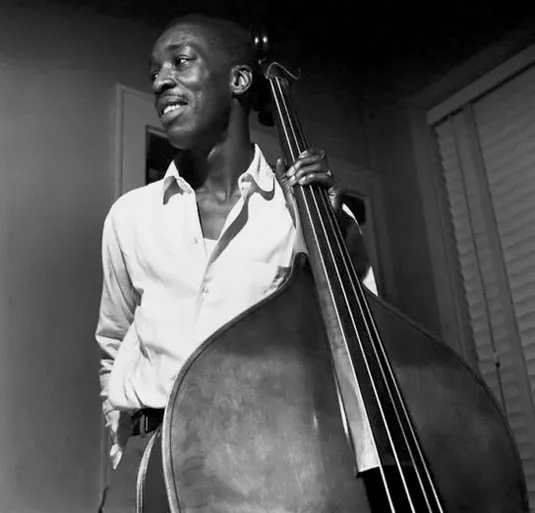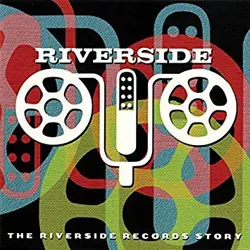Blue Mitchell (trompeta), Wynton Kelly (piano), Sam Jones (contrabajo) y Roy Brooks (batería). extraído del álbum Blue’s Moods (1960) de Blue Mitchell.
Sam Jones era un contrabajista con una técnica impecable, violonchelista y compositor de jazz norteamericano. Era muy solicitado y a menudo se asociaba con el batería Louis Hayes. Se trasladó a Nueva York en 1955 y colaboró con el saxofonista alto Lou Donaldson, los saxofonistas tenores Paul Gonsalves, Harold Land y Stanley Turrentine, los trompetistas Dizzy Gillespie, Kenny Dorham, Clarke Terry y Freddie Hubbard, los guitarristas Wes Montgomery y Grant Green, y los pianistas Thelonious Monk, Bud Powell, Bobby Timmons, Horace Parlan, Kenny Drew y Bill Evans. Sin embargo, es más conocido por su extenso trabajo con el saxofonista alto Cannonball Adderley entre 1957 y 1975, apareciendo en veintidós de sus álbums. También acompañó al pianista Red Garland en nueve de sus álbums de 1959 a 1978.
Sam Jones was an American jazz bassist with impeccable technique, cellist and composer. He was in very high demand and was often partnered with drummer Louis Hayes. He moved to New York in 1955 and collaborated with alto saxophonist Lou Donaldson, tenor saxophonists Paul Gonsalves, Harold Land and Stanley Turrentine, trumpeters Dizzy Gillespie, Kenny Dorham, Clarke Terry and Freddie Hubbard, guitarists Wes Montgomery and Grant Green, and pianists Thelonious Monk, Bud Powell, Bobby Timmons, Horace Parlan, Kenny Drew and Bill Evans. However, he is best known for his extensive work with alto saxophonist Cannonball Adderley between 1957 and 1975, appearing on twenty-two of his albums. He also baked up pianist Red Garland on nine of his albums from 1959 to 1978.

Jones grabó The Soul Society (1960), The Chant (1961) y Down Home (1962) para Riverside Records tocando el violonchelo en algunos de los temas. Perteneció al Oscar Peterson Trio de 1966 a 1970 tocando en siete álbums. También tuvo una estrecha relación musical con el pianista Cedar Walton, con el que grabó doce álbums de 1972 a 1980. Trabajó extensamente como músico de estudio durante el resto de su vida para diferentes sellos discográficos contribuyendo con otros grandes músicos como el saxofonista alto Sonny Stitt, los saxofonistas tenores Lucky Thompson, Clifford Jordan, Dexter Gordon, George Coleman y Archie Shepp, el trompetista Red Rodney, el pianista Duke Jordan y el muti-instrumentista Yusef Lateef. Entre sus trabajos como líder cabe destacar Something in Common (1977) y Something New (1979). Murió en 1981 a los 57 años de edad.
Jones recorded The Soul Society (1960), The Chant (1961) and Down Home (1962) for Riverside Records playing cello on some of the tracks. He was a member of the Oscar Peterson Trio from 1966 to 1970 playing on seven albums. He also had a close musical relationship with pianist Cedar Walton, with whom he recorded twelve albums from 1972 to 1980. He worked extensively as a freelancer for the rest of his life for different record labels contributing with other great musicians such as alto saxophonist Sonny Stitt, tenor saxophonists Lucky Thompson, Clifford Jordan, Dexter Gordon, George Coleman and Archie Shepp, trumpeter Red Rodney, pianist Duke Jordan and muti-instrumentalist Yusef Lateef. His best works as a leader include Something in Common (1977) and Something New (1979). He died in 1981 at the age of 57.

El tema es corto y podría formar parte de la banda sonora de una película de suspenso. Mitchell comienza su solo con energía sobre las armonías del blues y después el grupo toca un riff para dar paso a Jones, que hace un solo rápido y sin concesiones. A continuación la banda vuelve a tocar el riff y entra Kelly con una línea melódica muy bien elaborada. Vuelve Mitchell mostrando de nuevo su destreza y finalmente el grupo reexpone el tema.
The theme is short and could be part of a thriller soundtrack. Mitchell begins his solo energetically over blues harmonies and then the group plays a riff to give way to Jones, who takes a fast and uncompromising solo. Next the band plays the riff again and Kelly enters with a very well crafted melodic line. Mitchell returns showing again his skill and finally the group restates the theme.

Translated with the help of DeepL
℗ Riverside Records


Si te ha gustado el tema, quizá querrás escuchar también el primero de este álbum:
If you liked the track, you might also want to listen to the first one on this album:



